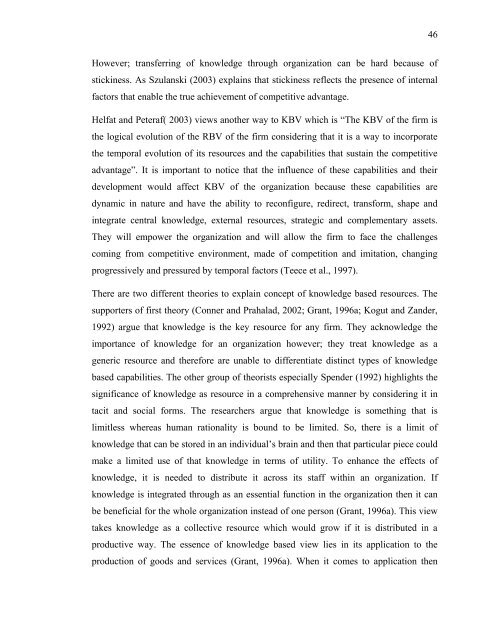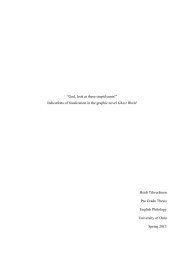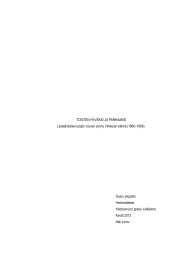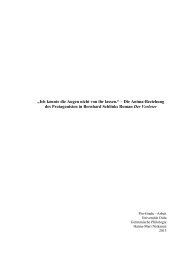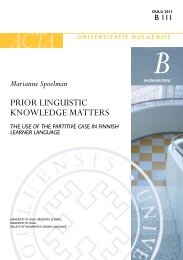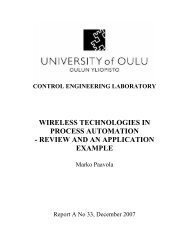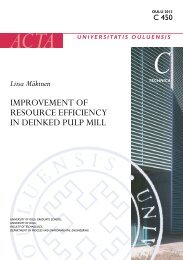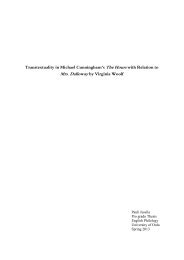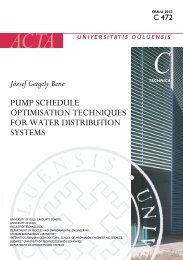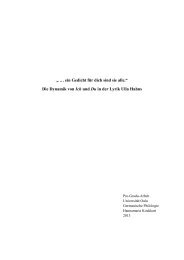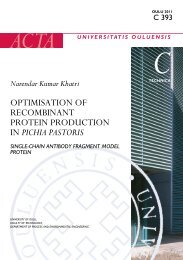Hassan Sherwani ROLE OF SALES AND MARKETING IN ... - Oulu
Hassan Sherwani ROLE OF SALES AND MARKETING IN ... - Oulu
Hassan Sherwani ROLE OF SALES AND MARKETING IN ... - Oulu
Create successful ePaper yourself
Turn your PDF publications into a flip-book with our unique Google optimized e-Paper software.
46<br />
However; transferring of knowledge through organization can be hard because of<br />
stickiness. As Szulanski (2003) explains that stickiness reflects the presence of internal<br />
factors that enable the true achievement of competitive advantage.<br />
Helfat and Peteraf( 2003) views another way to KBV which is “The KBV of the firm is<br />
the logical evolution of the RBV of the firm considering that it is a way to incorporate<br />
the temporal evolution of its resources and the capabilities that sustain the competitive<br />
advantage”. It is important to notice that the influence of these capabilities and their<br />
development would affect KBV of the organization because these capabilities are<br />
dynamic in nature and have the ability to reconfigure, redirect, transform, shape and<br />
integrate central knowledge, external resources, strategic and complementary assets.<br />
They will empower the organization and will allow the firm to face the challenges<br />
coming from competitive environment, made of competition and imitation, changing<br />
progressively and pressured by temporal factors (Teece et al., 1997).<br />
There are two different theories to explain concept of knowledge based resources. The<br />
supporters of first theory (Conner and Prahalad, 2002; Grant, 1996a; Kogut and Zander,<br />
1992) argue that knowledge is the key resource for any firm. They acknowledge the<br />
importance of knowledge for an organization however; they treat knowledge as a<br />
generic resource and therefore are unable to differentiate distinct types of knowledge<br />
based capabilities. The other group of theorists especially Spender (1992) highlights the<br />
significance of knowledge as resource in a comprehensive manner by considering it in<br />
tacit and social forms. The researchers argue that knowledge is something that is<br />
limitless whereas human rationality is bound to be limited. So, there is a limit of<br />
knowledge that can be stored in an individual’s brain and then that particular piece could<br />
make a limited use of that knowledge in terms of utility. To enhance the effects of<br />
knowledge, it is needed to distribute it across its staff within an organization. If<br />
knowledge is integrated through as an essential function in the organization then it can<br />
be beneficial for the whole organization instead of one person (Grant, 1996a). This view<br />
takes knowledge as a collective resource which would grow if it is distributed in a<br />
productive way. The essence of knowledge based view lies in its application to the<br />
production of goods and services (Grant, 1996a). When it comes to application then


